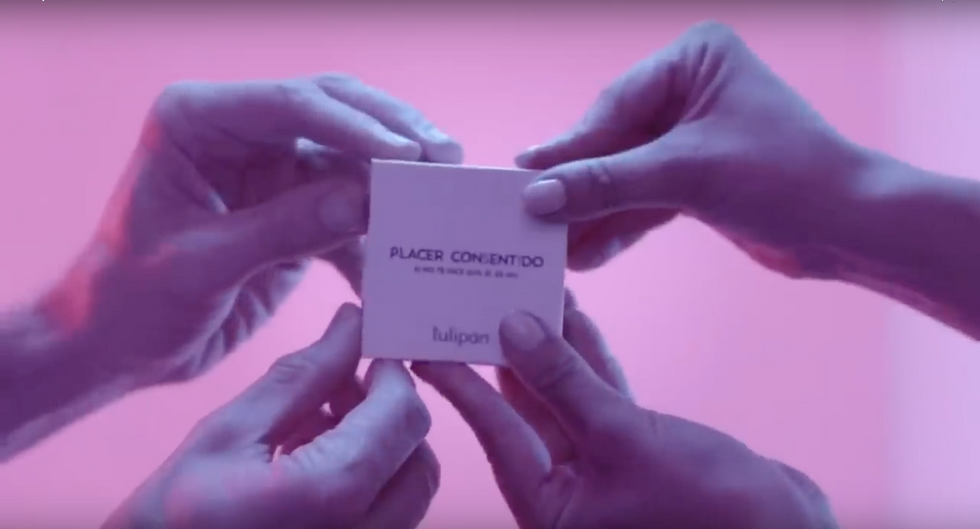The 'Consent Condom' Is Not An Effective Tool To Prevent Rape
We should stop focusing on trying to create products that "prove" consent was given and instead make sure that schools and health care providers have the resources to effectively teach about consent.
Consent (in terms of sexual activity) has been a hot topic for these past few years. Some people still claim to be unsure of how to verify someone has given you consent, which has caused the concept of consent to be watered down by companies that have made products that will supposedly make it easier to comprehend. At face value, the intent behind making a product that is meant to prevent rape and sexual assault is admirable, but the issue is that these products are advertising a definition of consent that is too rigid.
A 'consent condom' will be released online later this year by an Argentinian sex toy company called Tulipán. The condom is inside of a small package with eight buttons. All eight buttons must be pressed simultaneously in order to access the condom, and this can only be achieved by using four hands. The idea behind the 'consent condom' is that it ensures that both people involved are able to confirm that they are giving their consent. This is a great message to promote, but there are flaws in the product itself.
Now, you may be wondering, how is the 'consent condom' ineffective if it sounds like such a good product? Well, one issue I have with it is that it makes it seem like consent is something that can only be given once and that it can never be revoked. Consent evolves as sex progresses because giving consent to one sexual activity does not mean you are giving consent to every single sexual activity that comes afterward. Someone can also change their mind in the middle of sex and decide that they no longer want to participate, even though they had previously consented to it, which is a scenario that the 'consent condom' is not equipped for.
"The first and most obvious criticism of a condom, which aims to prevent rape by making a box impossible to open without the inclusion of a willing partner, is that a rapist is unlikely to stop and put on a condom at all, and even less likely to go out and buy a box of condoms which advertise themselves as only being accessible when someone gives consent. In fact, the only use this box of condoms could realistically have is to protect a man from a rape accusation. This isn't a product which celebrates or enables consent so much as it is a tool to protect men from all those nefarious, lying women waiting to say they were raped by them."
When I first heard about the 'consent condom' I had not even realized that it could be used by a rapist to defend their actions, and now after reading Baxter's article, I can completely see that being a possibility. Men constantly complain about how women could falsely accuse them of rape, which is not only highly unlikely but also is only a "concern" to men that are likely to commit rape in the first place.
The 'consent condom' could provide rapists with a way to "prove" that the sex they had was consensual. A rapist could claim that since they opened the box with the help of the person they raped, they cannot claim to have been forced into sex. Our society already rarely believes survivors of rape and the 'consent condom' could make it even harder for survivors to get the support they deserve.
Even though the creation of the 'consent condom' came from a place of good intentions, the product has more flaws than benefits. I am sure that Tulipán did not realize that the product could turn into a weapon used against survivors of rape, which makes it all the more important for them to listen to the criticisms of the product. We should stop focusing on trying to create products that "prove" consent was given and instead make sure that schools and health care providers have the resources to effectively teach about consent.





























